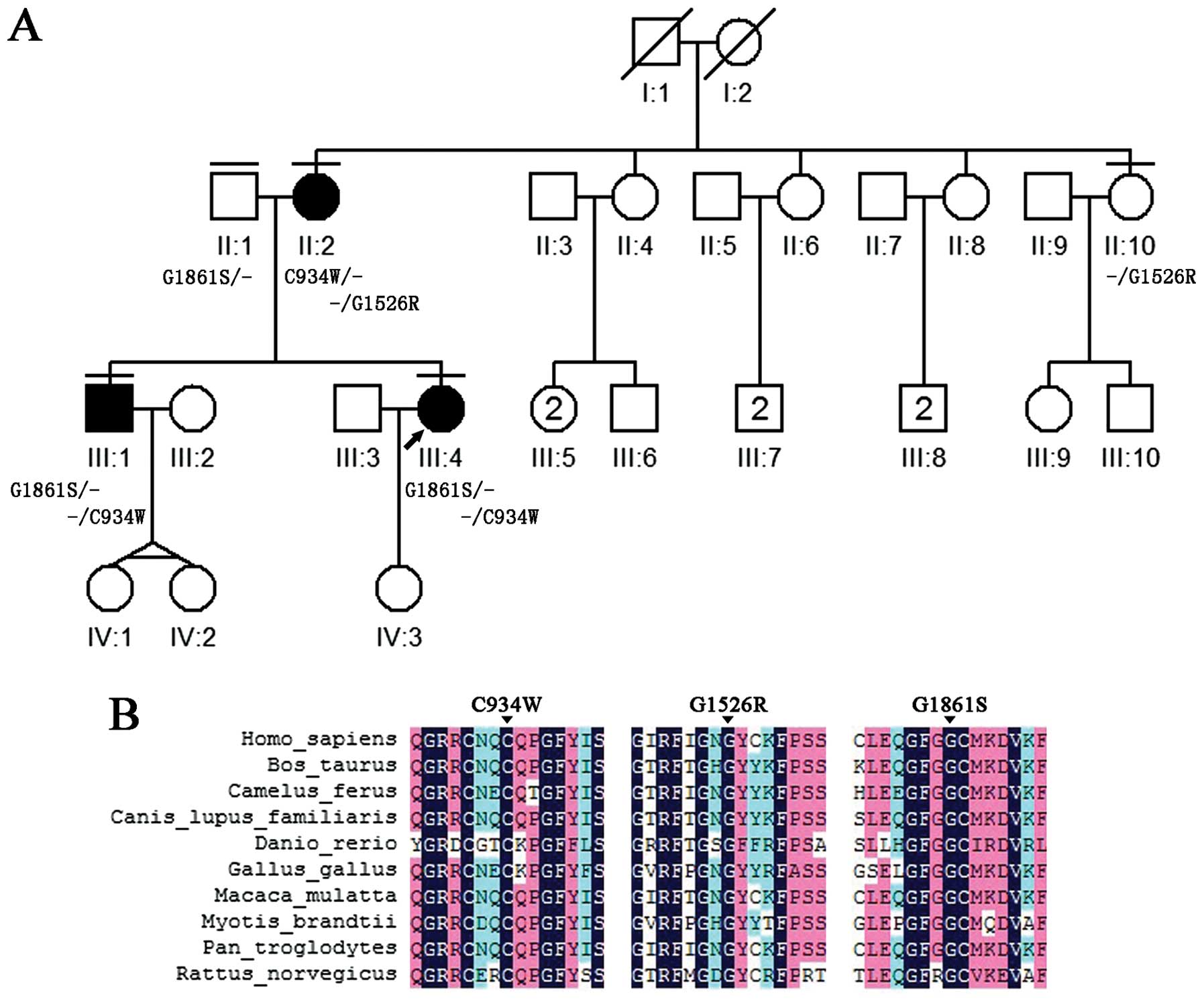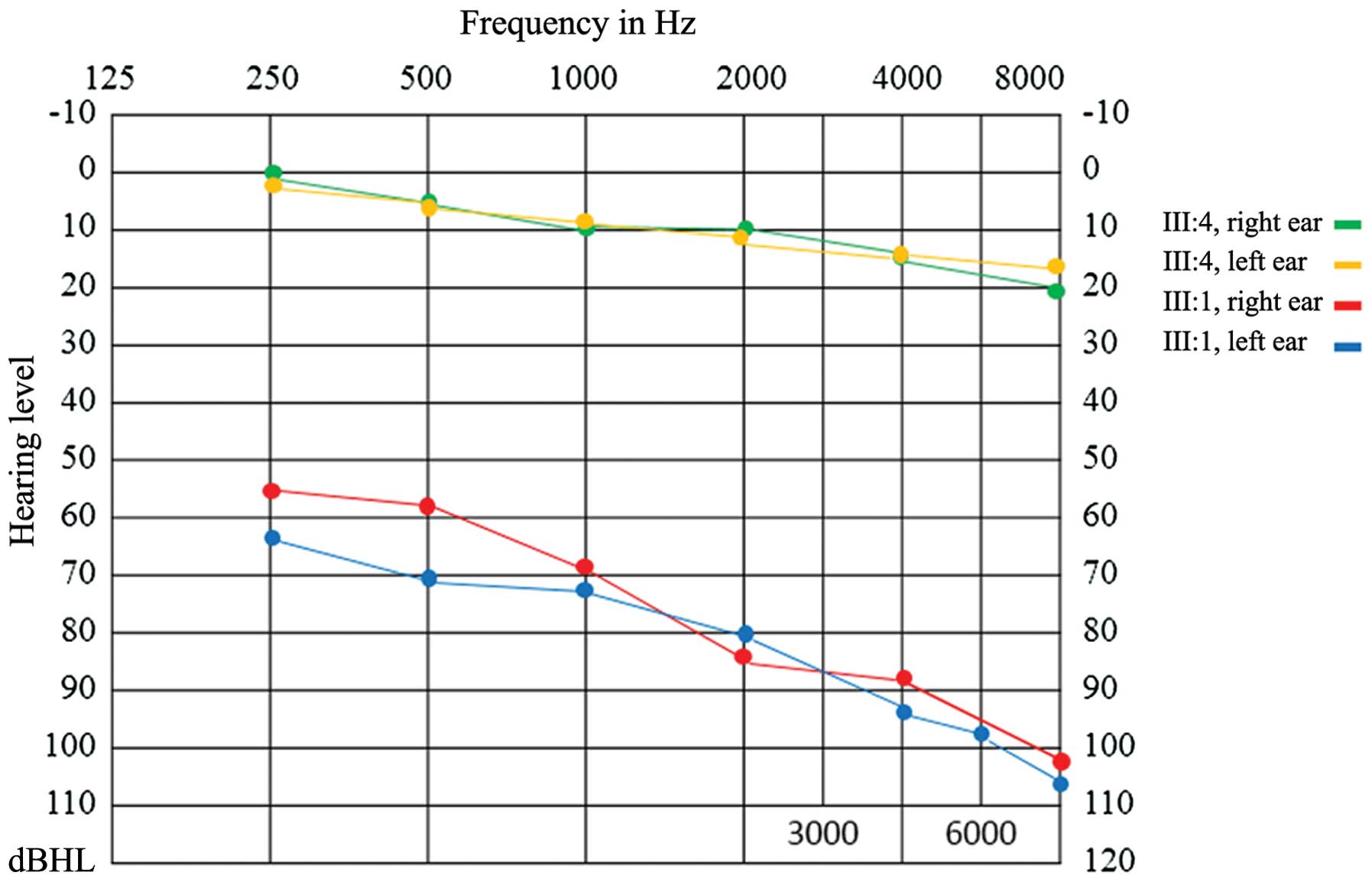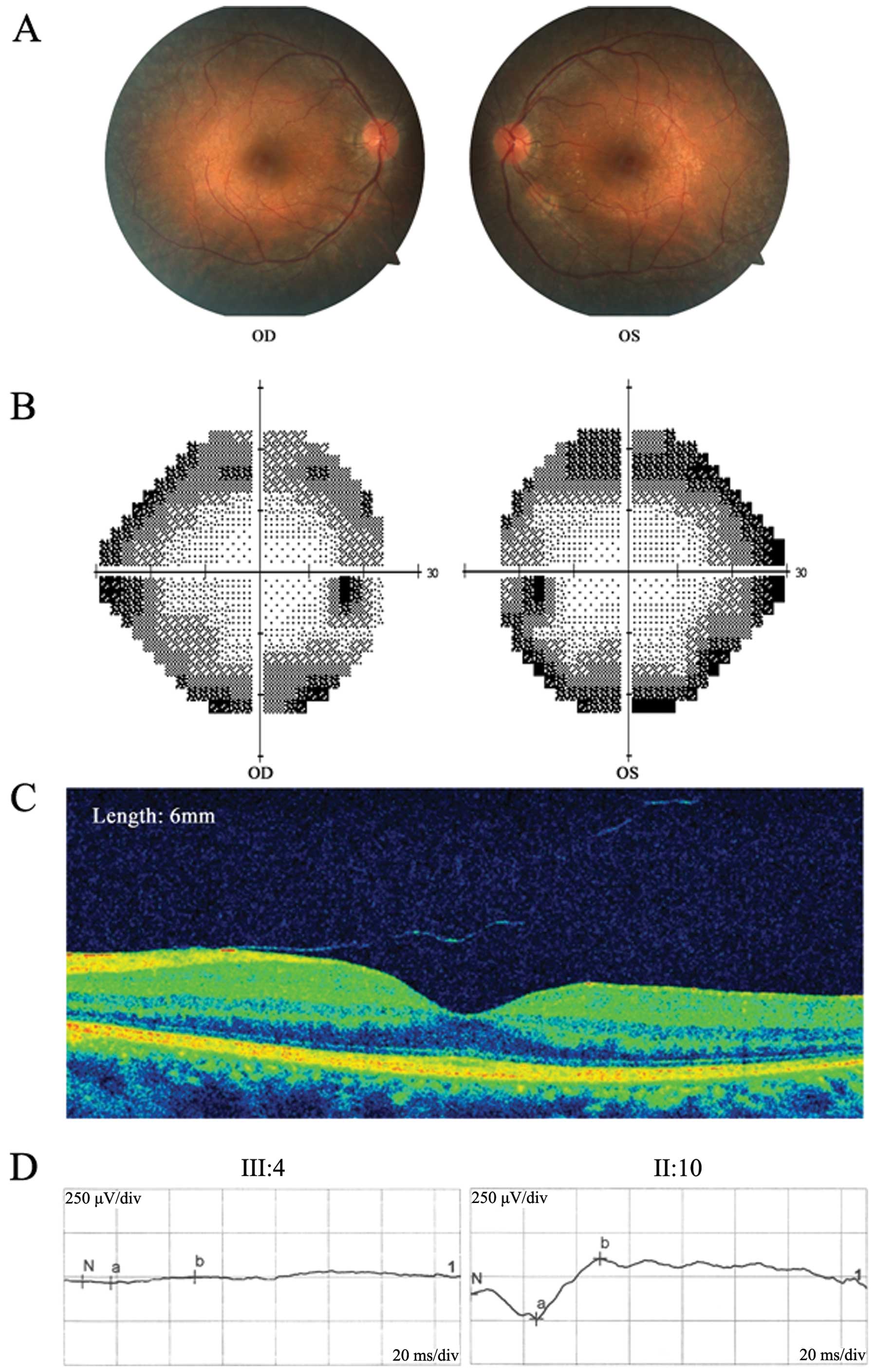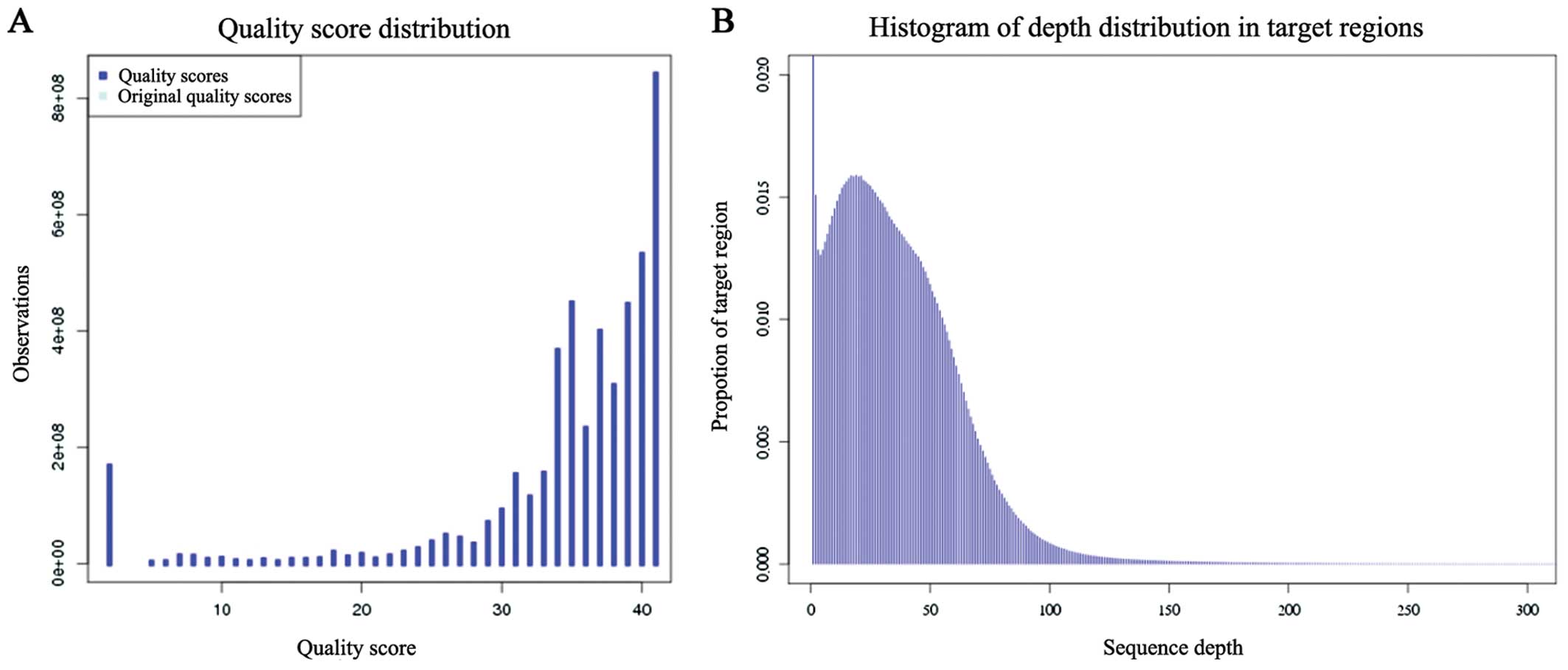Whole-exome sequencing identifies USH2A mutations in a pseudo-dominant Usher syndrome family
- Authors:
- Published online on: August 24, 2015 https://doi.org/10.3892/ijmm.2015.2322
- Pages: 1035-1041
-
Copyright: © Zheng et al. This is an open access article distributed under the terms of Creative Commons Attribution License.
Metrics:
Total
Views: 0 (Spandidos Publications: | PMC Statistics:
)
Total PDF Downloads: 0 (Spandidos Publications: | PMC Statistics:
)
Abstract
Usher syndrome (USH) is an autosomal recessive (AR) multi-sensory degenerative disorder leading to deaf-blindness. USH is clinically subdivided into three subclasses, and 10 genes have been identified thus far. Clinical and genetic heterogeneities in USH make a precise diagnosis difficult. A dominant‑like USH family in successive generations was identified, and the present study aimed to determine the genetic predisposition of this family. Whole‑exome sequencing was performed in two affected patients and an unaffected relative. Systematic data were analyzed by bioinformatic analysis to remove the candidate mutations via step‑wise filtering. Direct Sanger sequencing and co‑segregation analysis were performed in the pedigree. One novel and two known mutations in the USH2A gene were identified, and were further confirmed by direct sequencing and co‑segregation analysis. The affected mother carried compound mutations in the USH2A gene, while the unaffected father carried a heterozygous mutation. The present study demonstrates that whole‑exome sequencing is a robust approach for the molecular diagnosis of disorders with high levels of genetic heterogeneity.















